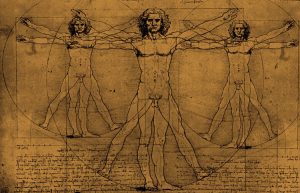What Is Balance in Art and Why Does It Matter
Balance is one of the most crucial principles in art’s domain. Balance and symmetry are interconnected. But they are not exactly the same thing.
Take a look at their definitions:
- Symmetry — The visual quality of the repeating parts of an image along an axis, along a path, or around a center.
- Asymmetry, on the other hand, refers to everything that is not symmetrical.
- Balance is a visual principle whereby a design looks equally balanced throughout the composition.
Order custom essay What Is Balance in Art and Why Does It Matter with free plagiarism report
 450+ experts on 30 subjects
450+ experts on 30 subjects
 Starting from 3 hours delivery
Starting from 3 hours delivery
Artist’s basically depends on balance when they are trying to create visual weight on their works. Balance measures the visual weight of your composition, which affects how much each element draws the attention of your audience. Key elements used in order to achieve balance are lines, shapes as well as color. There are two kinds of balance namely the symmetrical and asymmetrical balance.
- Symmetrical balance - Symmetrical balance occurs when your composition has the same visual weight on each side of the axis. Imagine perfect mirror images looking at each other around a central axis. This type of balance causes grace and simplicity. It's nice to look at it, but also very predictable.
- Asymmetric balance - A composition with an unequal weight on both sides has an asymmetric balance. This visual method, more interesting from the point of view of symmetry, has a large focal point on the one hand and several less significant focal points on the other.
Symmetrical balance often goes with the name formal balance whereas asymmetrical balance is also known as informal balance.
 Vitruvian Man by Leonardo Da Vinci
Vitruvian Man by Leonardo Da VinciAny work of art must be balanced. Moreover, even the most expressive and dynamic composition is still subject to the law of equilibrium, because only in this way will it be completed. But what does this mean?
When an artist depicts any objects, he distributes them on the plane of a sheet or canvas. Some of them are larger, some are smaller. Some are located on the left, some on the right ... This very distribution of objects in the sheet can create a feeling of movement, displacement, balance, etc.
In order to know which kind of balance is used by an artist one needs an imaginary line at the center of the artwork. Formal balance is defined as something which depicts similar things from both sides of your imaginary line. In informal balance on the other hand both sides of imaginary lines contain different things and thus the other side seems to be a little heavier as compared to the other side. Informal balance is more psychological in nature in that it is usually felt rather than noticed.
Most of Da Vinci’s works contains symmetrical balance. Da Vinci’s Proportion of the Human Figure is highly symmetrical in nature. This particular work depicts how a human body could create different shapes such as circle, square, and triangle. In this particular work Da Vinci created balance by creating appropriate proportion which gave birth to balance. The appearance of symmetrical balance in the Proportion of the Human Figure could be attributed to the fact that there had been an approximate symmetry in this particular work.
As compared to Leonardo Da Vinci, Deborah Butterfield uses more asymmetrical balnce on her works rather than symmetrical. An example of asymmetrical balance on her work could be found on her Verde. By drawing an imaginary line at the center we could basically see that the one side is heavier than the other and they depict different things as compared to Da Vinci’s Proportion of the Human Figure. In this particular work Butterfield used steel to achieve her desired end.
The head of the horse seems to be weightless since it seems like merely a stick protruding as compared to its body which seems to be full of steel and thus appears heavier. This technique allowed her a great example of depicting asymmetrical balance in art.
When confronting symmetry with asymmetry, it must be remembered that the visual mass of a symmetric figure will be greater than the mass of an asymmetric figure of a similar size and shape; symmetry creates balance in itself and is generally considered beautiful and harmonious. But there is a flip side to the coin - it is often devoid of dynamics and may seem static and boring; asymmetry, as the antipode of static symmetry, usually brings dynamics to the composition.
Composition is an integral part of a work of art. Compositional rules, techniques and means are based on the rich creative experience of artists of many generations, but the compositional technique does not stand still, it is constantly evolving, enriched by the creative practice of new masters.
References
- "Principles of Design,"; The Artspace Team, 1997) Reference: Principles of Design [Electronic Version] from http://sjc. ceu. edu/departments/art/chp03. pdf.
- The Artspace Team. (1997). Balance [Electronic Version] from http://www. peonqueen. com/ArtSpace/temp_exhib/art2/bal. html.
Related Questions
on What Is Balance in Art and Why Does It Matter
Cite this Page
What Is Balance in Art and Why Does It Matter. (2016, Jul 19). Retrieved from https://phdessay.com/balance-is-a-key-design-principle-that-is-represented-in-art-in-terms-of-symmetrical-and-asymmetrical-balance/
Run a free check or have your essay done for you


